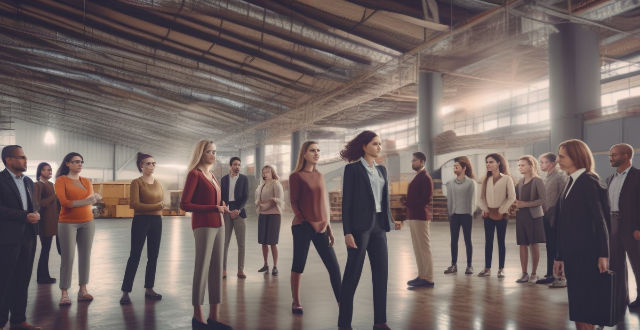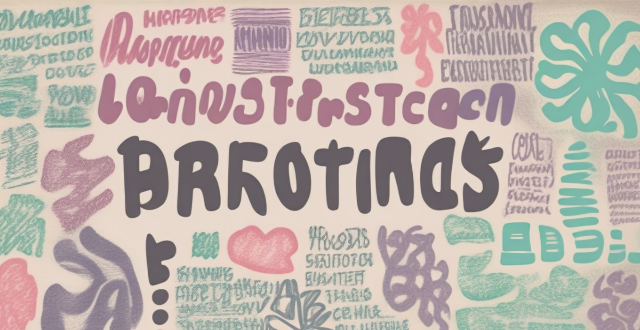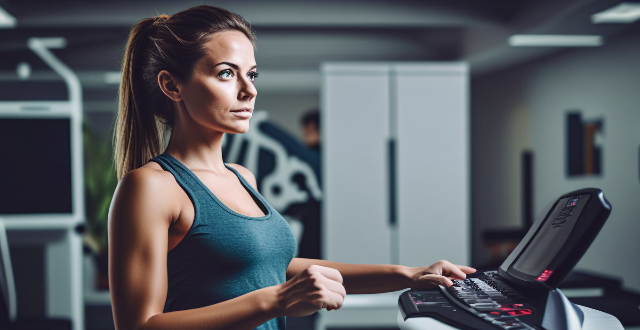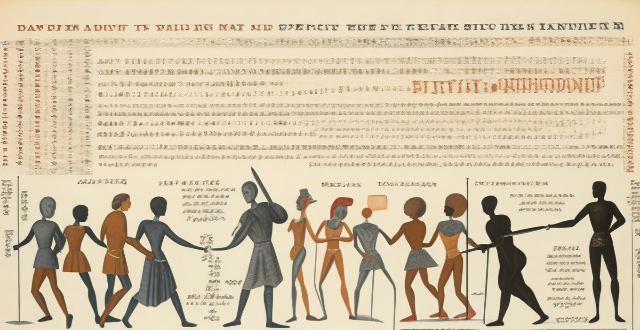Movement Renaissance

How has the #MeToo movement impacted women's rights globally ?
The #MeToo movement has significantly influenced women's rights globally by encouraging survivors to share their experiences and creating a culture of support. This has led to increased reporting and accountability for perpetrators, as well as heightened awareness about the prevalence and severity of sexual harassment and assault. Many countries have also implemented laws and policies in response to the movement, such as stricter penalties for perpetrators and protections for survivors. However, there are still challenges and limitations to its effectiveness, including the reluctance of some survivors to share their stories publicly and the underreporting and underprosecution of other forms of gender-based violence. Overall, the #MeToo movement has had a significant impact on advancing women's rights, but more work is needed to ensure full progress.

How has the #MeToo movement influenced corporate culture and policies towards women ?
The #MeToo movement has had a profound impact on corporate culture and policies towards women. It has brought attention to the prevalence of sexual harassment and assault in the workplace, leading to increased awareness and action to address these issues. This movement has also influenced companies to adopt more inclusive and supportive policies for their female employees. One of the most significant impacts is the increased awareness and education about sexual harassment and assault in the workplace. Companies have recognized the need to educate their employees about what constitutes inappropriate behavior and how to report it. Many organizations have implemented mandatory training programs for all employees, including managers and executives, to ensure that everyone understands the company's policies and procedures regarding sexual harassment. The #MeToo movement has also led to changes in corporate culture, particularly in terms of creating a more inclusive and supportive environment for women. Companies are now placing a greater emphasis on diversity and inclusion initiatives, recognizing that a diverse workforce is not only ethical but also beneficial for business success. This includes implementing policies that promote equal pay, opportunities for advancement, and flexible work arrangements to accommodate the needs of working parents. Another key area where the #MeToo movement has influenced corporate culture is in improving reporting mechanisms for incidents of sexual harassment or assault. Companies are now taking steps to ensure that their employees feel comfortable coming forward with concerns and that they will be taken seriously. This includes establishing anonymous reporting channels, providing resources for support and counseling, and ensuring that investigations are conducted thoroughly and impartially. Many companies have adopted zero-tolerance policies towards sexual harassment and assault in response to the #MeToo movement. These policies clearly outline the consequences of engaging in such behavior, which can include termination of employment. By enforcing strict penalties for misconduct, companies aim to create a workplace culture where employees feel safe and respected. The #MeToo movement has also highlighted the importance of supporting victims of sexual harassment or assault. Companies are now offering more comprehensive resources for employees who have experienced such incidents, including access to counseling services, legal assistance, and job protection while they recover from the trauma. This support helps victims feel heard and validated, encouraging them to come forward and seek help when needed. In conclusion, the #MeToo movement has had a significant influence on corporate culture and policies towards women by increasing awareness and education about sexual harassment, promoting inclusivity and support, improving reporting mechanisms, adopting zero-tolerance policies, and providing support for victims. These changes demonstrate a commitment by companies to create a safer and more equitable workplace for all employees.

How has the #MeToo movement influenced perceptions of female leadership ?
The #MeToo movement has increased awareness of gender bias and prompted changes in corporate culture, leading to greater representation of women in leadership roles. However, challenges remain in achieving true gender equality.

How accurate is the heart rate monitor on the Apple Watch ?
The Apple Watch's heart rate monitor is generally accurate but can be affected by factors like movement, fit, skin type, and temperature. It's recommended to ensure proper fit and minimize movement for the most accurate results.

How do force vectors influence an athlete's movement in sports biomechanics ?
Force vectors play a crucial role in sports biomechanics. The magnitude and direction of force vectors determine an athlete's acceleration, deceleration, and direction of motion. There are several types of force vectors, including internal, external, contact, frictional, and elastic forces. Understanding how these force vectors influence an athlete's movement is essential for improving performance and preventing injuries in sports. Coaches and athletes can use this knowledge to optimize their training programs and techniques.

What are the most effective ways to incorporate movement into a busy work schedule ?
Incorporating movement into a busy work schedule is crucial for maintaining physical and mental well-being. Here are some effective ways to add movement to your day: 1. Start with small changes like taking frequent breaks, walking meetings, and using the stairs. 2. Incorporate exercise into your commute by cycling or walking to work, or getting off public transportation early and walking the rest of the way. 3. Make the most of lunch breaks by doing physical activities like going for a walk or joining a fitness class. 4. Invest in office ergonomics such as standing desks or treadmill desks. 5. Set reminders and goals using activity trackers or calendar blocking. 6. Engage in leisure activities that involve movement, such as hobbies or social activities with friends or family. By prioritizing physical activity and making it a part of your daily routine, you can improve your health, boost your productivity, and enhance your overall well-being.

How can parents incorporate physical activity into their homeschooling routine ?
Incorporating physical activity into a homeschooling routine is crucial for a child's development, as it enhances cognitive abilities, improves mood, and fosters social skills. Parents can achieve this by scheduling regular exercise time, integrating movement into learning, involving outdoor activities, making physical activity fun, setting an example, and using technology. Starting the day with exercise, taking breaks for physical activity, teaching concepts through movement, combining art with movement, planning nature walks or hikes, assigning gardening tasks or outdoor chores, playing games, hosting dance parties, participating in physical activities alongside the child, enrolling the child in online fitness classes or following workout videos, and allowing the child to play active video games are some effective ways to incorporate physical activity into the homeschooling routine.

How have historical female figures influenced modern-day feminism and women's rights movements ?
This article explores how historical female figures have influenced modern-day feminism and women's rights movements. It discusses early pioneers like suffragettes and abolitionists, civil rights era figures such as Rosa Parks and Coretta Scott King, second-wave feminists including Betty Friedan and Gloria Steinem, and modern-day feminists like Malala Yousafzai and the #MeToo movement. These individuals have played crucial roles in shaping the course of feminism and women's rights movements, paving the way for future generations to fight for equality and justice.

How do office layouts influence employee physical health and activity levels ?
This article explores the influence of office layouts on employee physical health and activity levels, discussing the benefits and drawbacks of open versus closed office designs, the importance of ergonomics in workstation design, and strategies for encouraging movement within the workplace. By considering these factors, employers can create environments that promote productivity while prioritizing employee well-being.

How does understanding joint mechanics contribute to improving athletic performance through sports biomechanics ?
Understanding joint mechanics is crucial for improving athletic performance in sports biomechanics. By optimizing movement patterns, preventing injuries, enhancing force production, and improving stability, athletes can achieve greater success in their chosen sports. Sports biomechanists analyze an athlete's joint mechanics to develop targeted training programs that improve joint function and overall performance. Advances in sports technology provide real-time feedback on joint mechanics during training and competition, allowing athletes to fine-tune their technique and make adjustments to their training program as needed.

How does sports influence art expression ?
The text discusses how sports have influenced art expression throughout history and across various mediums. It outlines the impact of sports on visual arts, literature, music, dance, and fashion. The visual arts section includes sculpture, painting, photography, digital art, and motion graphics. The literature section covers sports literature, poetry, and ekphrastic poetry. The music section discusses national anthems, fight songs, pop culture, and hip hop culture. The dance and performance art section covers contemporary dance and performance art. Finally, the fashion section includes sportswear design and high-fashion collaborations. Overall, the text emphasizes the diverse and profound influence of sports on art expression.

What role does kinetics play in the study of sports biomechanics ?
Kinetics is a key aspect of sports biomechanics, focusing on forces and motions in physical activity. It aids in understanding how athletes generate power, control movements, and enhance performance. Key points include force analysis (internal and external), energy considerations (potential, kinetic, work, and power), movement efficiency (mechanical advantage, joint reaction forces, ground reaction forces), injury prevention and rehabilitation (overuse and traumatic injuries, rehab programs), and performance optimization (technique analysis, equipment design, training methods). Overall, kinetics helps coaches, athletes, and researchers make informed decisions about training, equipment, and technique to achieve safe and effective goals.

How has the relationship between sports and art evolved over time ?
The relationship between sports and art has evolved over time, reflecting societal shifts in values, technology, and cultural practices. In ancient civilizations, sports and art were often intertwined, serving both practical and aesthetic purposes. The Middle Ages saw a separation between the two due to religious influences, but by the Renaissance, there was a renewed interest in classical ideals that brought them closer again. Modern times led to specialization and convergence in areas such as advertising, while contemporary advancements in technology have allowed for unprecedented integration of sports and art through digital platforms and global spectacles.

What is the importance of biomechanics in sports research and development ?
Biomechanics is crucial in sports research and development. It involves the study of body movement and its interaction with external forces. By understanding biomechanics, athletes can improve performance, reduce injury risk, and enhance athletic ability. Biomechanics helps identify areas for improvement, prevent injuries, and develop better coordination and control. Overall, it's essential for athletes to reach their full potential.

What are the best idol concerts to attend ?
Attending an idol concert is a thrilling experience that combines music, visual effects, and the energy of live performances. Here are some of the best idol concerts to attend: 1. BTS World Tour 2. K-pop Global Super Concert 3. Taylor Swift's The Eras Tour 4. Harry Styles: Love On Tour 5. Beyoncé's Renaissance World Tour

How does climate change influence the movement of people from rural to urban areas ?
Climate change significantly impacts human migration patterns, particularly the movement from rural to urban areas. This trend is influenced by direct effects like extreme weather events and changes in agricultural conditions, as well as indirect factors such as economic downturns in rural sectors and social considerations. To reduce rural-to-urban migration driven by climate change, adaptation strategies are needed to enhance resilience in rural areas through sustainable agriculture practices, infrastructure development, economic diversification, and community support programs.

What are some of the most culturally rich travel destinations ?
Traveling is not only about seeing new places, but also about experiencing new cultures. Here are some of the most culturally rich travel destinations in the world: Paris is known as the "City of Love" and is one of the most romantic cities in the world. It's also a cultural hub with numerous museums, art galleries, and historical landmarks. Rome is an open-air museum with its ancient ruins, Renaissance architecture, and Baroque fountains. It's also a food lover's paradise with its delicious Italian cuisine. Beijing is a city where ancient history meets modernity. It's home to numerous historical sites such as the Great Wall and the Forbidden City. The city is also known for its Peking duck and traditional Chinese medicine. New Orleans is a melting pot of cultures with its unique blend of African, French, Spanish, and American influences. It's famous for its jazz music, Mardi Gras celebrations, and Creole cuisine.

How has the portrayal of sports evolved in literature over time ?
This text discusses the evolution of sports in literature, highlighting how the portrayal of sports has changed over time. The author explains that in ancient literature, sports were seen as a symbol of strength and heroism, while in medieval literature, they showcased the skills of knights and noblemen. With the Renaissance, sports became more realistic and focused on technique, and modern literature has used sports to explore complex issues like identity and social inequality. Overall, the text emphasizes the importance of sports in literature throughout history.

What is the history behind the origin of street food ?
The origin of street food can be traced back to ancient times, with evidence of vendors selling food and drinks in public spaces in ancient Middle Eastern and Asian civilizations. Over the centuries, street food has evolved and diversified, reflecting changing social, economic, and cultural dynamics. In the Roman Empire, a well-developed system of food markets and street vendors sold a variety of dishes. During the Middle Ages, street food became more prevalent in Europe due to the growth of fairs and markets. In Renaissance Italy, street food became more sophisticated and diverse, with vendors selling pizza, pasta, and gelato. Early American settlers relied on street food for sustenance, while immigrants brought their own street food traditions with them. In recent decades, globalization has led to the spread of street food cultures around the world, and the rise of food trucks has revolutionized the industry. Today, street food continues to evolve and adapt to changing tastes and trends while preserving its rich heritage and diversity.

In what ways do factors like body composition and flexibility affect sports biomechanics ?
In sports biomechanics, body composition and flexibility are crucial factors affecting performance. Increased muscle mass and a high strength-to-weight ratio enhance power in weightlifting and sprinting. A lower fat percentage improves aerodynamics and reduces energy expenditure in endurance activities. Higher bone density offers better support in impact-heavy sports. Greater flexibility increases the range of motion, preventing injuries and improving efficiency in rapid movements. Optimal body composition and flexibility can significantly improve an athlete's performance and reduce injury risk.